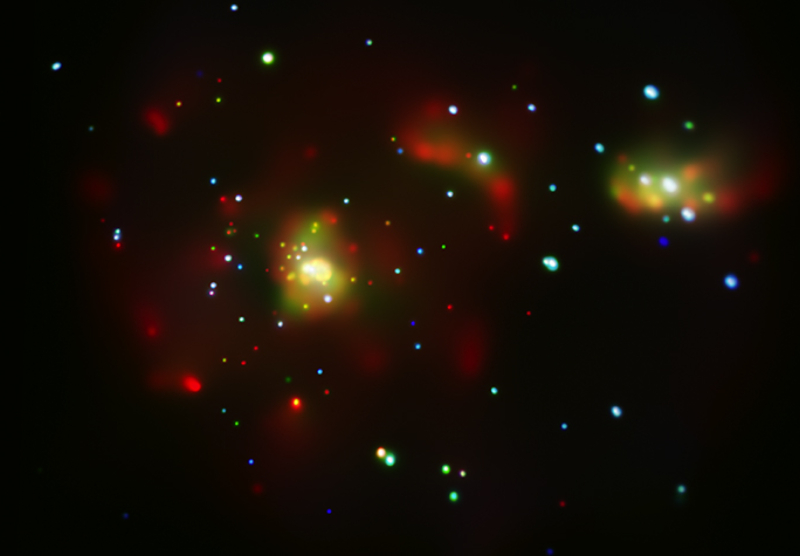
 Credit: NASA/CXC/Wesleyan Univ./R.Kilgard
Credit: NASA/CXC/Wesleyan Univ./R.Kilgard
See the Whirlpool
Galaxies come in two types: elliptical and spiral, a reflection of the stellar orbits within. Elliptical galaxies are really triaxial ellipsoids, ball-like or cigar shaped, in which the orbital planes of the member stars are randomly oriented. In spirals, stars orbit mostly in one plane, and like cars on a highway tend to pile up in dense waves, which give the spirals their notable shapes. One of the brightest, nearest and best known spiral galaxies is M51, the "Whirlpool Galaxy". High resolution optical images of the Whirlpool (like those obtained with the Hubble Space Telescope) reveal interactions in the galaxy in stunning detail. Images in other wavebands reveal more subtle effects in the galactic ecology. The image above is an X-ray image of M51 (and its smaller neighbor, the galaxy NGC 5195) taken by the Chandra X-ray observatory. NGC 5195 is the smaller object seen near the right edge in the image above. The X-ray image is dominated by the interactions of stellar winds and explosions with the galactic gas and dust, along with emission from point-like sources, neutron stars and black holes. But the spiral structure is difficult to see in the X-ray picture: the emission is dominated by sources near the center of the Whirlpool, and the center of NGC 5195.
<
HEA Dictionary ● Archive
● Search HEAPOW
● Other Languages
● HEAPOW on Facebook
● Download all Images
● Education ● HEAD
>
Each week the HEASARC
brings you new, exciting and beautiful images from X-ray and Gamma ray
astronomy. Check back each week and be sure to check out the HEAPOW archive!
Page Author: Dr. Michael F. Corcoran
Last modified Tuesday, 27-Feb-2024 10:06:45 EST


